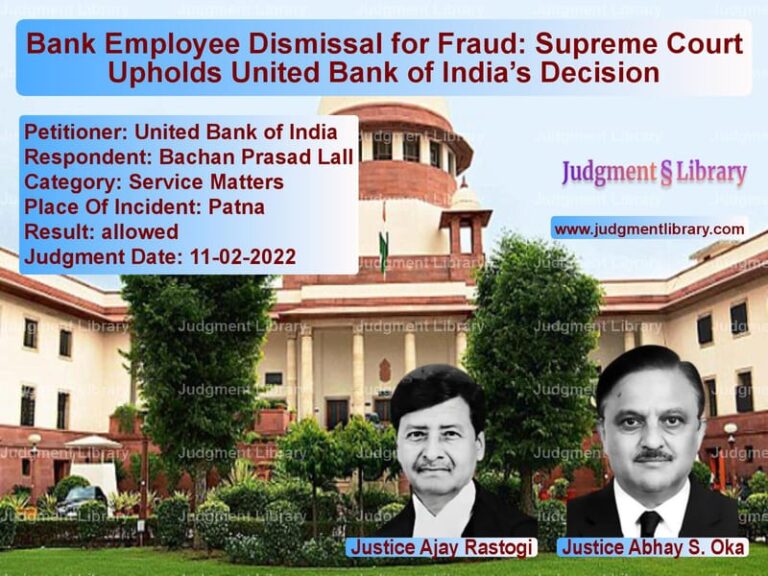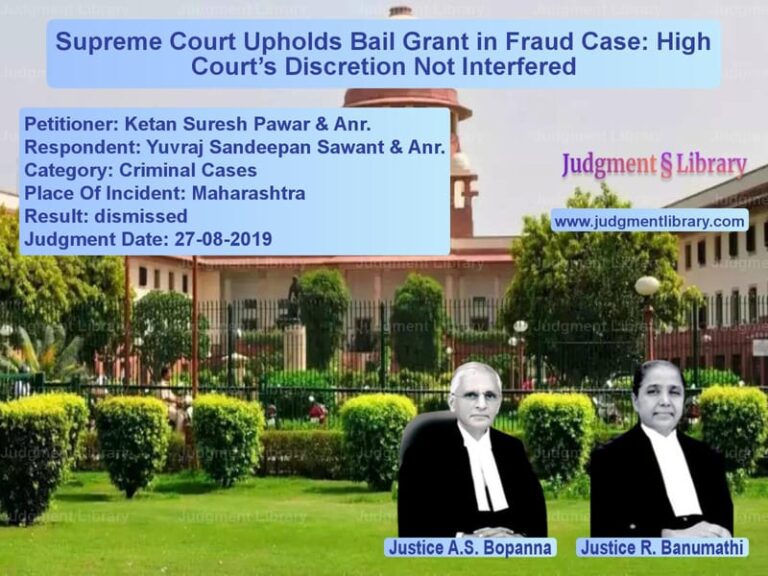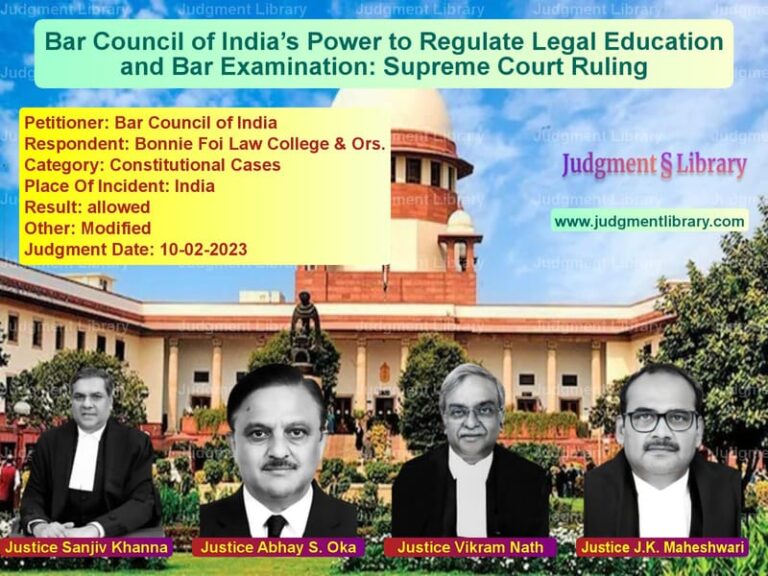Supreme Court Upholds Armed Forces Tribunal Decision on Promotion Policy for Indian Army Officers
The case of Union of India vs. Lt. Col. P.K. Choudhary & Others revolves around the promotion policy for officers in the Indian Army. The Supreme Court examined whether the policy circular issued by the Government of India in January 2009, which allocated additional vacancies for promotion using the ‘Command Exit Model,’ was discriminatory and whether the Armed Forces Tribunal’s decision to quash it was justified.
Background of the Case
The respondents, Lt. Col. P.K. Choudhary, Lt. Col. G.S. Dhillon, Lt. Col. A.K. Pandey, and others, were commissioned into various Corps of the Indian Army after completing their training at the Indian Military Academy. Their initial allocation was based on vacancies in different branches, operational commitments, and merit.
Following the Kargil War, the Government of India constituted the Ajay Vikram Singh Committee (AVSC) to recommend reforms for enhancing operational preparedness and restructuring the officer cadre. The committee recommended:
- Lowering the age profile for officers in the rank of Colonel from 41-42 years to 36-37 years.
- Creating 1484 additional vacancies in the rank of Colonel to facilitate career progression.
- Implementing a ‘Command Exit Model’ to optimize the promotion pipeline.
Implementation of AVSC Recommendations
The Government accepted the AVSC recommendations and released additional vacancies in two phases:
- The first phase, in 2004, allocated 750 vacancies across all three streams—Arms, Arms Support, and Services—on a pro-rata basis.
- The second phase, in 2008, released 734 vacancies exclusively to Arms and Arms Support using the Command Exit Model.
The respondents, who belonged to the Services category (Army Service Corps, Ordnance Corps, and Electronics & Mechanical Engineers), challenged this policy before the Armed Forces Tribunal.
Petitioner’s Arguments (Union of India)
The Government of India argued:
- The additional vacancies were specifically meant for Arms and Arms Support to lower the age profile of Commanding Officers.
- Services officers were never intended to benefit from these vacancies.
- The first phase’s pro-rata distribution was an administrative mistake and should not create an entitlement for Services officers in the second phase.
- The Command Exit Model was essential to maintain operational efficiency and ensure younger leadership in combat roles.
Respondents’ Arguments (Lt. Col. P.K. Choudhary & Others)
The respondents countered:
- The first tranche of vacancies was distributed on a pro-rata basis, and the same principle should apply to the second tranche.
- Excluding Services officers from the second tranche was discriminatory and violated Articles 14 and 16 of the Constitution.
- The decision created disparities within the Army, undermining unit cohesion.
- They were denied their rightful career progression despite having served for the same duration as their counterparts in Arms and Arms Support.
Armed Forces Tribunal Judgment
The Armed Forces Tribunal ruled in favor of the respondents and held:
- The policy circular dated January 20, 2009, was discriminatory and arbitrary.
- Vacancies should be distributed among all three streams (Arms, Arms Support, and Services) on a pro-rata basis.
- The Government should create supernumerary posts to accommodate the affected officers.
Supreme Court’s Analysis
1. Applicability of AVSC Recommendations
The Supreme Court examined whether AVSC recommendations applied to Services officers. It ruled:
- The AVSC report explicitly focused on Arms and Arms Support due to their direct role in combat.
- Reducing the age profile of Commanding Officers was necessary for operational readiness.
- Services officers were not included in the intended beneficiaries of additional vacancies.
2. Validity of the Command Exit Model
The Court upheld the Command Exit Model as a rational policy, stating:
- The model was designed to ensure that young officers led combat units.
- The Government’s discretion in policy matters could not be easily overturned unless it was proven to be manifestly arbitrary.
3. Distribution of Additional Vacancies
The Court found that:
- The first tranche’s pro-rata allocation was a mistake, not a precedent.
- The Government had the authority to rectify such mistakes in subsequent allocations.
- Services officers had distinct career paths and could not demand parity with combat arms.
Final Judgment
The Supreme Court partially allowed the appeal and ruled:
- The Armed Forces Tribunal’s order quashing the 2009 policy was set aside.
- The Government’s allocation of vacancies to Arms and Arms Support was upheld.
- However, to address career stagnation in Services, the Government was directed to create 141 additional posts for Services officers.
- Officers promoted under these new posts would receive seniority benefits but not backdated pay.
Impact of the Judgment
The ruling reinforced key principles:
- Policy decisions in defense matters are entitled to deference unless found to be arbitrary.
- Combat readiness takes precedence over administrative convenience.
- Parental choice in service allocation cannot create automatic entitlement to equal promotions.
Conclusion
The Supreme Court’s decision in Union of India vs. Lt. Col. P.K. Choudhary & Others upholds the principle that military operational requirements take precedence over administrative uniformity. While ensuring justice for Services officers by creating additional vacancies, the Court reaffirmed the Government’s discretion in managing promotions within the armed forces.
Don’t miss out on the full details! Download the complete judgment in PDF format below and gain valuable insights instantly!
Download Judgment: Union of India vs Lt. Col. P.K. Choudh Supreme Court of India Judgment Dated 15-02-2016-1741852625284.pdf
Direct Downlaod Judgment: Direct downlaod this Judgment
See all petitions in Promotion Cases
See all petitions in Recruitment Policies
See all petitions in Public Sector Employees
See all petitions in Judgment by T.S. Thakur
See all petitions in Judgment by Kurian Joseph
See all petitions in partially allowed
See all petitions in Modified
See all petitions in supreme court of India judgments February 2016
See all petitions in 2016 judgments
See all posts in Service Matters Category
See all allowed petitions in Service Matters Category
See all Dismissed petitions in Service Matters Category
See all partially allowed petitions in Service Matters Category







